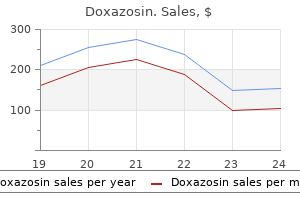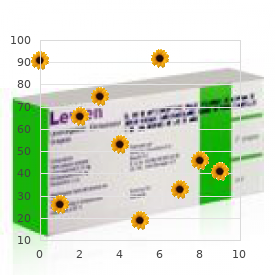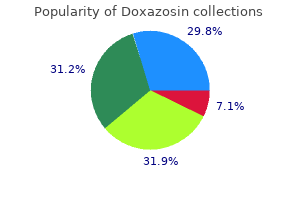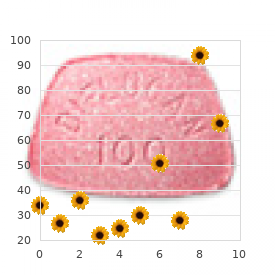Only $0.28 per item
Doxazosin dosages: 4 mg, 2 mg, 1 mg
Doxazosin packs: 30 pills, 60 pills, 90 pills, 120 pills, 180 pills, 270 pills, 360 pills
In stock: 952
8 of 10
Votes: 296 votes
Total customer reviews: 296
Description
Although resection of the primary leads to prompt resolution gastritis diet ïðåâîäà÷ cheap doxazosin 4 mg amex, identifying the site of the primary can be challenging and require extensive imaging. Enzyme replacement therapy has been found to be effective at treating severely affected infants and children (Whyte et al. Three distinct abnormalities are seen pathologically: · High turnover disease is observed most commonly. As well as evidence of increased bone turnover in the form of increased numbers of osteoblasts and osteoclasts, there may be typical features of hyperparathyroidism including osteitis fibrosa and woven bone. It has a range of severity and can present in the perinatal period, infancy, childhood and adulthood. This may be exacerbated by concurrent risk factors for osteoporosis such as hypogonadism and glucocorticoid therapy. In heterotopic calcification, a wide range of soft tissues may be affected, including periarticular tissues (tumoral calcinosis) (Hruska and Seifert, 2013). There may be evidence of increased soft-tissue calcification, particularly vascular calcification. Oral bisphosphonates are probably safe but may need to be administered at lower dose or greater dosage interval. Denosumab runs the risk of acute hypocalcaemia, hence calcium levels should be checked 1Â2 weeks after administration. Extrapolation of their benefits in osteoporosis may justify their use, particularly in high bone turnover states given their anti-resorptive action. Theoretically, these agents may be less effective or even harmful in adynamic bone disease where bone turnover is already suppressed. Although calcium levels tend to fall as a consequence of reduced calcitriol, they are generally maintained within the normal range by secondary hyperparathyroidism. Clinical features Clinical features vary with the degree of hypercalcaemia: a mild elevation of serum calcium concentration may cause no more than general lassitude, polyuria and polydipsia. In long-standing cases patients may develop kidney stones or nephrocalcinosis due to chronic hypercalciuria; some complain of joint symptoms, due to chondrocalcinosis. There may also be symptoms and signs of the underlying cause, which should always be sought. Tertiary hyperparathyroidism is when secondary hyperplasia leads to Treatment Hyperphosphataemia and secondary hyperparathyroidism can be treated by restricting the intake of phosphorus and taking phosphate binders, and by administering a vitamin D analogue, most commonly alfacalcidol. However, the biochemical changes are complex and treatment should always be managed by a renal specialist. Treatment Acute severe hypercalcaemia is a medical emergency and needs to be promptly treated with intravenous fluids. The resulting hypercalcaemia increases glomerular filtration of calcium to such an extent that there is hypercalciuria despite the augmented tubular reabsorption.

Eupatorium (Hemp Agrimony). Doxazosin.
- Are there safety concerns?
- Are there any interactions with medications?
- What is Hemp Agrimony?
- Liver and gallbladder disorders, colds, and fever.
- How does Hemp Agrimony work?
- Dosing considerations for Hemp Agrimony.
Source: http://www.rxlist.com/script/main/art.asp?articlekey=96497
After nerve regeneration or repair gastritis diet 8i buy doxazosin 2 mg low price, a proportion of proximal sensory axons will fail to reach their appropriate sensory end-organ; they will either have regenerated down the wrong Schwann-cell tube or will be entangled in a neuroma at the site of injury. Exploration is indicated: (1) if the nerve was seen to be divided and needs to be repaired; (2) if the type of injury. Vascular injuries, unstable fractures, contaminated soft tissues and tendon divisions should be dealt with before the nerve lesion. The incision will be long, as the nerve must be widely exposed above and below the lesion before the lesion itself is repaired. For example, in a midshaft humeral with radial nerve injury, the anterolateral approach may be employed rather than the posterior. If microsurgical equipment and expertise are not available, then the nerve lesion should be identified and the wound closed pending transfer to an appropriate facility. Therefore, two-point discrimination (measured with a bent paperclip and compared with the opposite normal side) gives an indication of how completely the nerve has recovered. Static two-point discrimination measures slowly adapting sensors (Merkel cells) and moving two-point discrimination measures rapidly adapting sensors (Meissner corpuscles and pacinian corpuscles). They are more useful in nerve-compression syndromes, where individual receptors fail to send impulses centrally; two-point discrimination is preserved because the innervation density is not affected. Locognosia is the ability to localize touch and can be tested with a standardized hand map. The patient is blindfolded and instructed to pick up and identify nine objects as rapidly as possible. Primary repair A divided nerve is best repaired as soon as this can be done safely. Primary suture at the time of wound toilet has considerable advantages: the nerve ends have not retracted much; their relative rotation is usually undisturbed; and there is no fibrosis. A clean cut nerve is sutured without further preparation; a ragged cut may need paring of the stumps with a sharp blade, but this must be kept to a minimum. The stumps may be brought together by gently mobilizing the proximal and distal segments, by flexing nearby joints to relax the soft tissues, or (in the case of the ulnar nerve) by transposing the nerve trunk to the flexor aspect of the elbow. A traction lesion  especially of the brachial plexus  may leave a gap too wide to close. These injuries are best dealt with in specialized centres, where primary grafting or nerve transfer can be carried out. If a tourniquet is used, it should be a pneumatic one; it must be released and bleeding stopped before the wound is closed. The limb is splinted in a position to ensure minimal tension on the nerve; if flexion needs to be excessive, a graft is required. It is now apparent that nerve gaps of less than 2 cm can regenerate through a tube which excludes the surrounding tissue from each end.

Specifications/Details
Fibrous joints join bone or cartilage by fibrous tissue and allow very little movement gastritis diet 90x discount doxazosin 4 mg fast delivery, such as in the sutures of the skull. In secondary cartilaginous joints the two bone ends are covered in a thin layer of hyaline cartilage and these two ends are joined by interposed fibrous cartilage. The spine consists of a series of fibrocartilaginous joints as each vertebra is joined to its neighbour by an intervertebral disc consisting of fibrocartilage filled with gel. Even in cartilaginous joints that allow very little movement the joint can fail, particularly if subjected to heavy loads such as the acromioclavicular joint in weightlifters. Damage to the fibrocartilage can sometimes be accompanied by osteophyte formation. This junction is enclosed within a joint capsule containing synovial fluid which bathes and lubricates the hyaline cartilage. The capsule is lined by a synovial membrane that contains cells called synoviocytes. These produce lubricant and hyaluronic acid which is responsible for viscosity of the synovial fluid. They also produce cytokines and growth factors and remove unwanted waste products, such as metabolites, from the synovial fluid. These are arranged in such a way as to provide stability throughout the range of movement of the joint. It is strongly associated with age, and extremely common in older people; some studies estimate that over 80% of people over 55 years of age have osteoarthritis of at least one joint. These specimens were taken from elderly patients with fractures of the femoral neck. The hip has a ridge of fibrocartilage called the labrum which deepens the articulation, whilst in the knee the same tissue has migrated further into the joint and has become the menisci. The menisci spread load through the knee and improve congruence, thereby improving stability. Synovial joints move in a controlled way because of the muscle forces that act across them. These areas of attachments by soft tissues to bone are called entheses and are subject to tensile forces. Once one structure begins to fail, the surrounding structures are affected adversely and then also fail. Normally the insult, whether biological or mechanical, affects a number of structures simultaneously and the remaining structures secondarily. For example, a traumatic knee injury could lead to a tear of the meniscus, fracture of subchondral bone, disruption of the hyaline cartilage and stretching of entheses, all occurring simultaneously. It is susceptible to fracture when subjected to great compressive force or to avascular necrosis when subjected to shear forces. Collapse of the subchondral bone leads to splitting of the overlying hyaline cartilage. Synovium can become inflamed due to chemical irritants such as crystals, or infection; additionally, the synovium is prone to inflammation resulting from systemic immune-related problems, as in rheumatoid arthritis.
Syndromes
- Finger-thumb rubbing (pill rolling tremor)
- Wounds that do not heal
- Wheezing
- Weight loss
- Arrange for transportation to and from the hospital.
- Have very dry eyes
- Swelling of the throat
- Fatigue
- Peritoneal fluid culture

There are gastritis severe pain doxazosin 2 mg on-line, however, risks associated with operative tendon repair, including wound healing problems and sural nerve neuroma. Differential diagnosis Incomplete tear A complete rupture is often mistaken for a partial tear (which is rare). The mistake arises because, if a complete rupture is not seen within 24 hours, the gap is difficult to feel; moreover, the patient may by then be able to stand on tiptoe (just), by using his or her long toe flexors. Tear of soleus muscle A tear at the musculotendinous junction causes pain and tenderness halfway up the calf. Upper motor neuron lesions Spastic paralysis may occur in children with cerebral palsy or in adults following a stroke. Lower motor neuron lesions Poliomyelitis was (and in some parts of the world still is) a common cause of foot paralysis. If all muscle groups are affected, the foot is flail and dangles from the ankle; if knee Treatment If the patient is seen early, the ends of the tendon may approximate when the foot is passively plantarflexed. With unbalanced weakness, the foot develops fixed deformity; it may also be smaller and colder than normal, but sensation is normal. Other lower motor neuron disorders such as spinal cord tumours, peroneal muscular atrophy and severe nerve root compression are rare causes of foot weakness or deformity. Peripheral nerve injuries the sciatic, lateral popliteal or peroneal nerve may be affected. Postoperative or postimmobilization drop foot may be due to pressure on the lateral popiteal or on the peroneal nerve as the leg rolls into external rotation. Tenosynovitis Tenderness and swelling are localized to the affected tendon, and pain is aggravated by active movement  inversion or eversion against resistance. Rupture of tibialis posterior tendon Pain starts quite suddenly and sometimes the patient gives a history of having felt the tendon snap. The heel is in valgus during weight bearing; the area around the medial malleolus is tender and active inversion of the ankle is both painful and weak. In physically active patients, operative repair or tendon transfer using the tendon of flexor digitorum longus is worthwhile. Osteochondritis dissecans of the talus Unexplained pain and slight limitation of movement in the ankle of a young person may be due to a small osteochondral fracture of the dome of the talus. If the articular surface is intact, it is sufficient to simply restrict activities. The causes are the same as for necrosis at other more common sites such as the femoral head. Drop foot due to nerve palsy can be treated by transferring the tibialis posterior through the interosseous membrane to the midtarsal region.
Related Products
Additional information:
Usage: q.h.

Tags: generic doxazosin 1 mg free shipping, generic 1 mg doxazosin with visa, cheap doxazosin 2 mg free shipping, purchase doxazosin 1 mg on-line
Customer Reviews
Real Experiences: Customer Reviews on Doxazosin
Esiel, 47 years: Both types of barriers are important, and they also frequently interact dynamically. Curiously, while the male:female distribution is more or less equal in white (Caucasian) peoples, black African women are affected far more frequently than their male counterparts. In this case, given the lack of an extraosseous component, the patient was treated by extended intralesional curettage and cementation (h). By using combinations of T1W, T2W and fat-suppressed sequences, specific abnormalities can be further characterized with tissue specificity, so further extending the diagnostic possibilities.
Shakyor, 24 years: Chronic cumulative urate crystal formation in tissue fluids leads to deposition of monosodium urate crystals in the synovium, cartilage, tendons and soft tissues, resulting in tophi formation and chronic tophaceous gouty arthritis. Chronic pyogenic infection may follow unresolved acute infection and is characterized by persistence of the infecting organism (or, more frequently, multiple microorganisms) in pockets of necrotic tissue. Histologically this is a true osteosarcoma of intermediate grade with osteoid and chondroid matrix deposition. The clinical assessment is completed by a swift general examination for joint hypermobility and signs of neuromuscular abnormalities.
Oelk, 64 years: Swelling over the medial side of the first metatarsal head (a bunion) is common in older women. This may describe both faceto-face and nonÂface-to-face prolonged time spent in care on the same day as the appointment occurred. More than 50% of asymptomatic individuals of 30Â39 years of age have disc degeneration. While the condition resolves, and many patients become asymptomatic, up to 40% may develop mild to moderate persistent symptoms.



